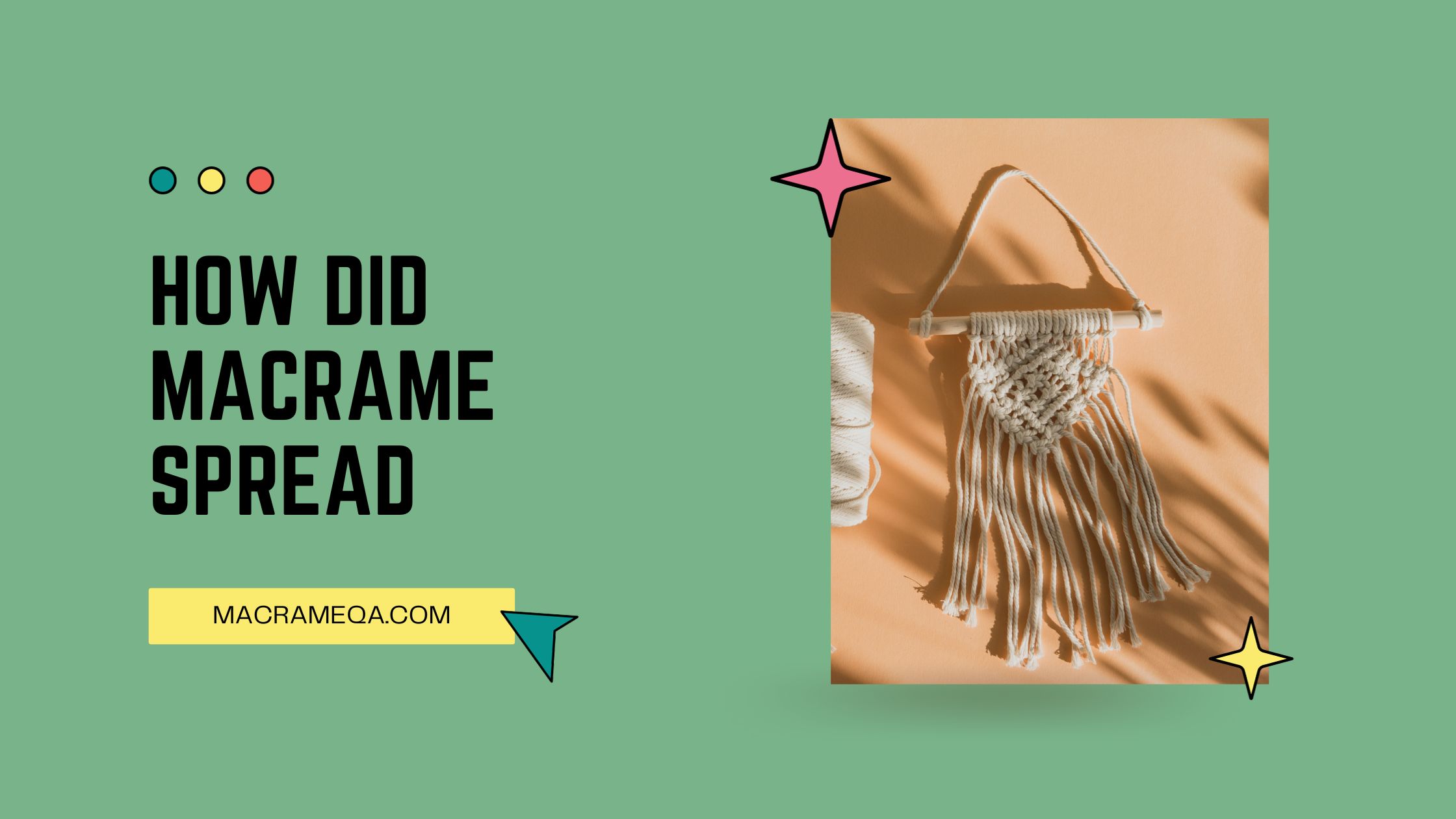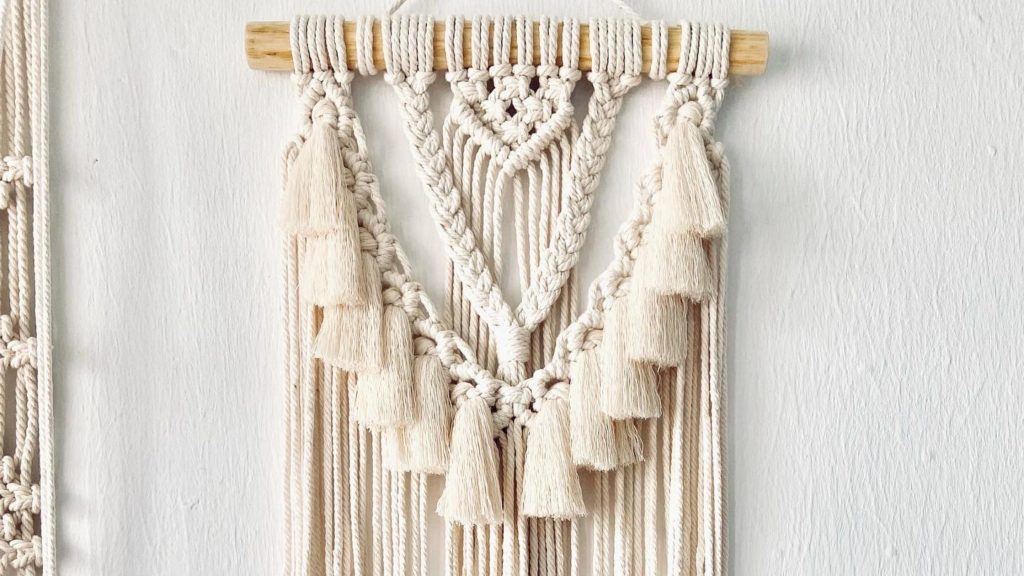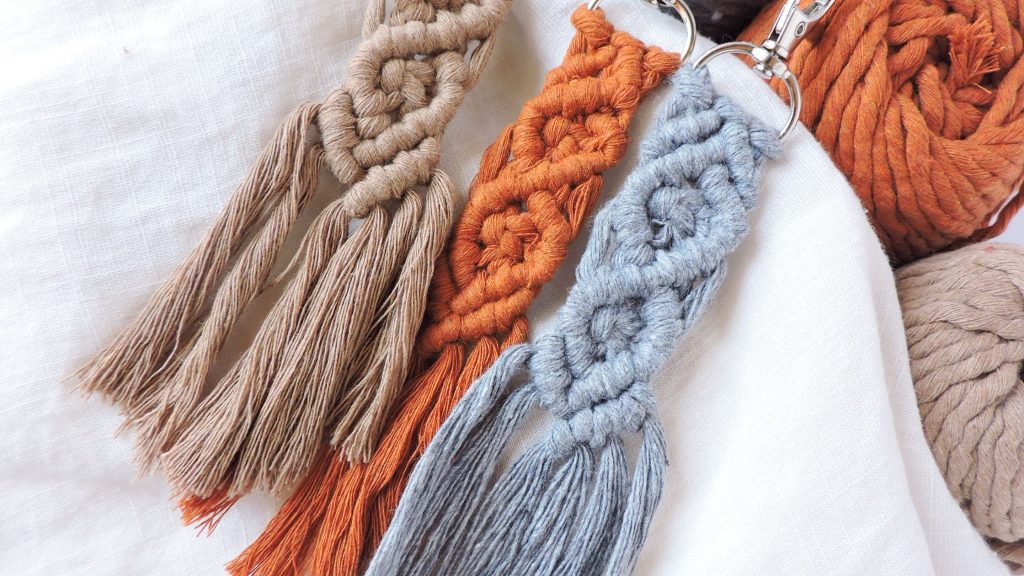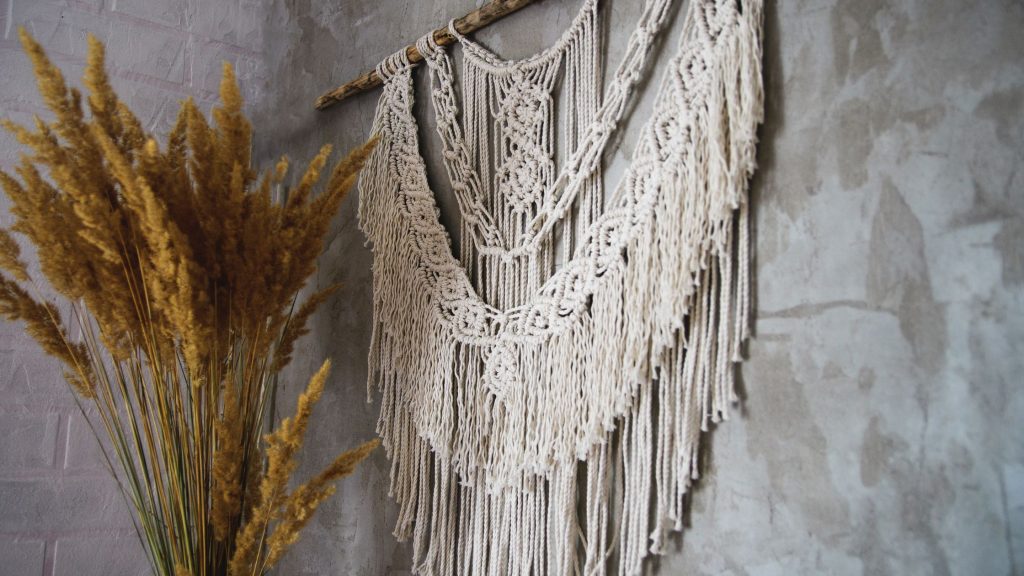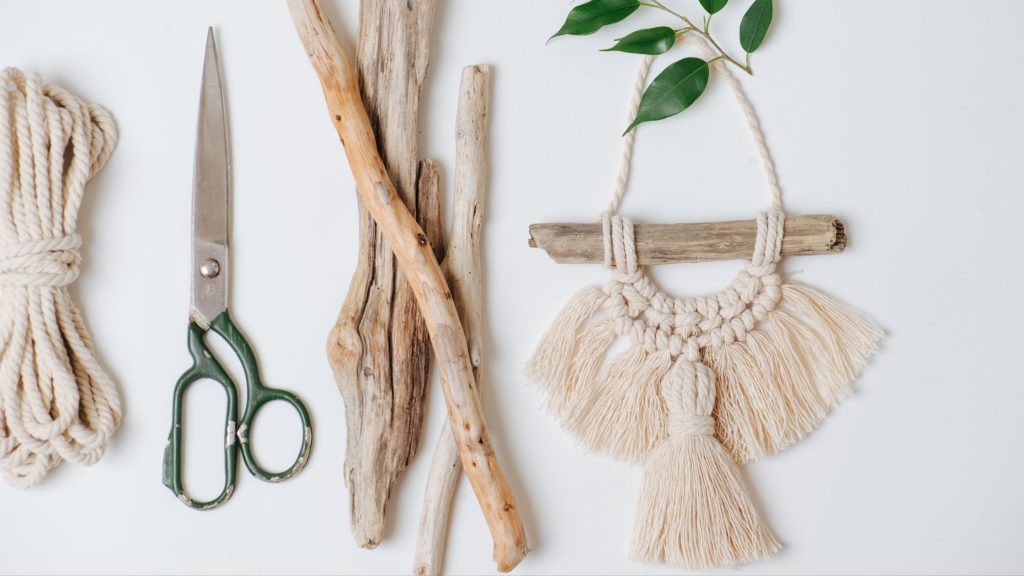Macrame, an ancient art form of knotting cords together to create intricate patterns, has a rich history that spans across continents. From its origins in ancient Egypt and the Middle East to its modern resurgence in the Western world, the spread of macrame has been a fascinating phenomenon. This article will explore the various factors that contributed to the diffusion of macrame across different continents, shedding light on the cultural exchanges, trade routes, and artistic influences that played a significant role in its global dissemination. Get ready to unravel the captivating story of how did macrame spread and became a beloved craft around the world.
Traditional Origins
Ancient Origins in the Middle East
Macrame, the ancient art form of knotting threads to create intricate patterns and designs, has its roots in the Middle East. Dating back thousands of years, macrame was initially practiced by Arabic weavers who used knots to create decorative and functional items such as belts, sandals, and horse reins. The versatility and durability of macrame made it a popular technique among nomadic tribes, enabling them to craft items that were useful for their everyday lives.
Spread to the Mediterranean
From the Middle East, the art of macrame spread to the Mediterranean region, including countries like Greece, Turkey, and Egypt. The intricate knotting techniques and distinct patterns of macrame found their way into the rich tapestry of Mediterranean cultures. In ancient Greece, macrame was often used in the creation of ceremonial costumes and jewelry, showcasing the skill of the artisans who mastered the craft.
Influence in Africa
The art of macrame also found its way to the African continent, where it became deeply intertwined with various tribal cultures. In regions like Morocco and Senegal, macrame was used to create elaborate textiles and household items. The influences of African tribal art and motifs can still be seen in modern macrame designs, reflecting the cultural exchange and creative inspiration that occurred throughout history.
Macrame in Europe
Introduction to Europe
Macrame reached Europe through various trade routes, including those established during the Crusades. The intricate knotting techniques and unique patterns of macrame captivated European artists and craftsmen, who began incorporating macrame into their works. From Spain to Italy, macrame spread throughout Europe, each country infusing its own artistic style and cultural traditions into the craft.
Renaissance Influence
During the Renaissance period, macrame experienced a surge in popularity as an art form. The intricate knotting techniques and delicate patterns of macrame were seen as a symbol of wealth and refinement, and were widely used in the creation of elaborate garments and accessories. Italian cities such as Venice and Genoa became renowned for their macrame craftsmanship, setting a high standard that would influence macrame practices for centuries to come.
Victorian Era Popularity
In the Victorian era, macrame saw a resurgence in popularity as a decorative technique for lavish household items. The delicate lace-like patterns of macrame were used in the creation of curtains, tablecloths, and decorative hangings. Macrame also made its way into fashion, with women’s accessories and clothing featuring intricate macrame detailing. The Victorian appreciation for the ornate and delicate nature of macrame contributed to its continued popularity in the following centuries.
Macrame in the Americas
Indigenous American Techniques
In the Americas, indigenous cultures developed their unique macrame techniques and styles. Native American tribes, such as the Navajo and Hopi, used macrame to create stunning textiles, jewelry, and ceremonial objects. The intricate knotting patterns often conveyed spiritual symbolism and cultural significance, making macrame an integral part of their artistic expression.
Colonial Era Influence
With the arrival of European colonizers in the Americas, macrame techniques from Europe were introduced and blended with indigenous styles. Colonial settlers recognized the skill and artistry of indigenous macrame techniques and began incorporating them into their own creations. This fusion of styles and techniques resulted in the emergence of new and distinctive macrame designs in the Americas.
Revival in the 1960s
Macrame experienced a significant revival in the 1960s during the counterculture movement. Inspired by the bohemian spirit and the desire to reconnect with traditional crafts, macrame became a popular craft among artists and creative individuals. The versatility of macrame allowed for the creation of various accessories and home decor items, making it an ideal medium for self-expression and personal style.
Macrame in Asia
Introduction to Asia
Macrame techniques were introduced to Asia through ancient trade routes, such as the Silk Road. As Asian cultures embraced the art of knotting, they incorporated their unique styles and materials, resulting in diverse expressions of macrame throughout the continent.
Influence in India and Sri Lanka
In India and Sri Lanka, macrame techniques flourished, particularly in the creation of decorative items and traditional garments. Intricate macrame knots were often used to embellish fabrics, adding texture and visual interest to clothing and accessories. These beautiful macrame designs continue to be woven into the fabric of Indian and Sri Lankan cultures, reflecting the enduring influence of this ancient craft.
Chinese and Japanese Macrame
In East Asia, macrame took on distinct styles in China and Japan. Chinese macrame, known as “chinese knotting,” has a long history and is characterized by its intricate patterns and use of silk thread. Japanese macrame, or “shibori,” is a technique that involves folding, stitching, and dyeing fabrics to create patterns. Both Chinese and Japanese macrame techniques have been passed down through generations and are still practiced today.
Oceania and Pacific Islands
Traditional Pacific Island Macrame
In the Pacific Islands, macrame has been a traditional art form for centuries. Using natural fibers like coconut husks and palm leaves, Pacific Islanders developed their unique macrame techniques to create functional items such as fishing nets, bags, and ceremonial dresses. The intricate knotting techniques and symbolic designs reflect the connection between the Pacific Islanders and their natural surroundings.
Influence on Australian Macrame
Macrame techniques from the Pacific Islands also found their way to Australia, where they were integrated into the rich tapestry of Australian Aboriginal culture. Aboriginal artists embraced macrame, using natural materials like kangaroo sinew and native plant fibers to create intricate baskets and ceremonial objects. The influence of the Pacific Island macrame on Australian Aboriginal art showcases the interconnectivity of indigenous cultures across different regions.
Macrame in Modern Times
Crafting Renaissance in the 21st Century
In recent years, there has been a resurgence of interest in macrame, with a crafting renaissance taking place in the 21st century. Artists, designers, and craft enthusiasts are rediscovering the beauty and versatility of macrame, using it as a medium for personal expression, home decor, and even wearable art. The accessibility of macrame tutorials and resources online has fueled this modern-day macrame movement, allowing individuals from all corners of the world to engage with the craft.
Popularity in Interior Design
Macrame has also gained popularity in the realm of interior design, with its tactile texture and natural aesthetic adding warmth and character to living spaces. Macrame wall hangings, plant hangers, and curtains have become sought-after decor items, providing a bohemian and eclectic touch to homes and businesses. The resurgence of macrame in interior design reflects a growing appreciation for handmade and artisanal craftsmanship in a world dominated by mass production.
Online Platforms and Global Accessibility
The internet and social media platforms have played a significant role in the global accessibility of macrame. Crafters and enthusiasts from around the world can now connect, share ideas, and learn from one another through online communities and platforms dedicated to macrame. This global exchange of knowledge and creativity has nurtured a vibrant and inclusive macrame community, where artists and amateurs alike can learn, inspire, and collaborate.
Cultural Exchange and Macrame
Macrame Workshops and Classes
Macrame workshops and classes have become popular events, allowing individuals to learn macrame techniques from experienced artists and instructors. These workshops provide an opportunity for cultural exchange, as participants can learn not only the technical skills but also the cultural and historical significance behind different macrame styles. By attending these workshops, individuals can immerse themselves in the rich heritage of macrame and gain a deeper understanding of its global journey.
International Macrame Festivals
The growing popularity of macrame has led to the emergence of international macrame festivals, where artists and enthusiasts from different countries come together to celebrate and showcase their craft. These festivals serve as platforms for cross-cultural exchange, fostering a sense of community and camaraderie among macrame enthusiasts. They provide a space for artists to learn from one another, share their creations, and explore new possibilities for the future of macrame.
Macrame as Cultural Heritage
Macrame has become more than just a craft; it is now recognized as a cultural heritage in many countries. The intricate patterns, unique techniques, and historical significance of macrame have prompted governments and organizations to preserve and promote this ancient art form. By recognizing macrame as an important part of cultural heritage, efforts are made to protect and pass down the traditional knowledge and skills associated with macrame to future generations.
Influence of Globalization
Macrame Trends and Inspirations
Globalization has played a significant role in shaping modern macrame trends and inspirations. The exchange of ideas and cultural influences through travel, social media, and the internet has resulted in the fusion of different macrame styles and techniques. Traditional macrame designs are being reimagined and combined with contemporary elements, resulting in innovative and unique creations that appeal to a global audience.
Cross-Cultural Collaborations
The interconnectedness of the modern world has facilitated cross-cultural collaborations in the realm of macrame. Artists and designers from different continents are coming together to create collaborative macrame projects, exchanging techniques, and sharing cultural perspectives. These collaborations not only showcase the diversity of macrame but also foster understanding and appreciation for different artistic traditions.
Macrame’s Role in Sustainable Fashion
As the world becomes more conscious of sustainability, macrame has emerged as a craft with eco-friendly appeal. The use of natural fibers and materials in macrame, as well as the emphasis on handmade craftsmanship, aligns with the principles of sustainable fashion. Macrame techniques are being incorporated into clothing, accessories, and even jewelry, offering consumers a unique and environmentally conscious alternative to mass-produced fast fashion.
Exploration and Innovation
Macrame in Art
Macrame is increasingly being recognized as a legitimate art form, with artists pushing the boundaries of traditional techniques and exploring macrame as a medium for contemporary art. Sculptures, installations, and wall hangings made entirely of macrame showcase the skill and creativity of artists who are redefining the perception of macrame as a craft.
Experimental Techniques
Innovation and experimentation have become integral to the evolution of macrame. Artists and enthusiasts are constantly exploring new techniques, materials, and approaches to push the boundaries of what is possible with macrame. From incorporating unconventional materials like wire and beads to experimenting with new knotting methods, macrame continues to evolve as a dynamic and ever-changing craft.
Fusion with Other Crafts
Macrame has found its way into the realm of other crafts, blending harmoniously with disciplines such as weaving, embroidery, and ceramics. Artists are combining macrame with other techniques to create mixed media works that are both visually stunning and conceptually thought-provoking. This fusion of crafts allows for greater creativity and innovation, showcasing the potential of macrame to adapt and reinvent itself.
Conclusion
From its ancient origins in the Middle East to its global prominence in modern times, the art of macrame has journeyed across continents, cultures, and centuries. The intricate knotting techniques and distinct patterns have evolved and adapted, influenced by different artistic traditions and societal trends. Today, macrame continues to captivate artists, crafters, and enthusiasts worldwide, serving as a timeless medium for self-expression, cultural exchange, and creative exploration. As we embrace the beauty and versatility of macrame, we honor the rich heritage and craftsmanship that has shaped this ancient art form into the vibrant and global phenomenon it is today.

